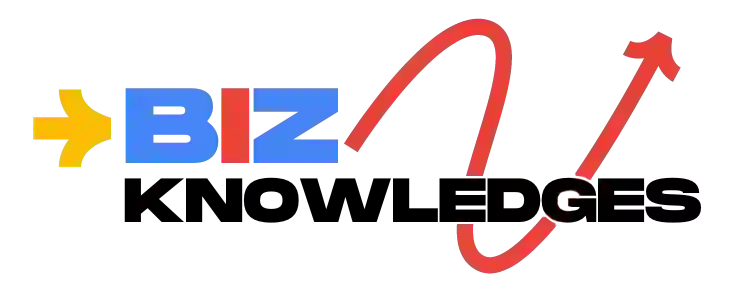Business Line of Credit vs. Business Loan: Which is Right for You?

Navigating the world of business finance can be complex, but the effort to understand it can be incredibly rewarding. Securing the right type of financing at the right time can propel your business forward and facilitate growth. We’ll break down the specifics of a business line of credit and business loans, explore their key differences, and guide you on choosing the right one for your situation.
What is a Business Line of Credit?
A business line of credit is a flexible loan from a bank or financial institution. Similar to a credit card, it offers a business access to funds that can be used when needed. The key advantage of a business line of credit is its revolving nature, allowing you to borrow up to a certain limit and pay interest only on the amount borrowed, not the entire credit line. Once you repay borrowed funds, that amount is available again for use. This type of financing is ideal for managing a company’s cash flow and unexpected expenses.
The beauty of a business line of credit lies in its flexibility. You’re approved for a maximum amount, but you don’t need to use it all. You can tap into it to smooth out cash flow bumps, manage seasonal business fluctuations, purchase inventory, or handle unexpected expenses. The control remains in your hands, and you only pay interest on the amount you actually use, not the total credit limit.
This financing tool is particularly useful for businesses that face irregular revenue patterns or those that require continual access to funds without going through repeated loan applications. With each repayment, your available credit replenishes, making it a renewable resource for your ongoing business needs.
What is a Business Loan?
In contrast, a business loan provides you with a lump sum of money upfront, which is then repaid over time under agreed-upon terms with the lender. Business loans are typically used for specific projects or the purchase of fixed assets. They often have a fixed interest rate and a repayment schedule that can be tailored to match the business’s cash flow capabilities.
When a business takes out a loan, it receives a lump sum upfront and agrees to pay back the principal amount along with interest over a set period, typically anywhere from one to ten years, depending on the type of loan. Unlike a business line of credit, once a business loan is repaid, the account is closed, and accessing additional funds requires applying for a new loan.

Business loans are categorized into different types, including term loans, SBA loans, equipment financing, and commercial real estate loans, each serving distinct needs and purposes. Term loans, for instance, are often used for specific, one-time investments such as expanding a facility, acquiring another business, or making significant capital improvements.
One of the main advantages of a business loan is the clarity it offers. Borrowers know exactly how much they need to pay each month, which helps in budgeting and financial planning. This can be particularly comforting for businesses that prefer stable, predictable costs over the flexibility of drawing and repaying on an ongoing basis.
Key Differences Between a Business Line of Credit and a Business Loan
The primary difference between these two financing options lies in their structure and use case:
- Accessibility: A business line of credit offers flexible access to funds, whereas a business loan gives you a one-time lump sum.
- Interest Rates: Typically, the interest rate on a business line of credit may be higher than that of a business loan, reflecting the higher risk due to the flexibility of access to funds.
- Repayment Terms: Loans have a fixed repayment schedule, while lines of credit have more flexible repayment options based on the usage of the funds.
When to Choose a Business Line of Credit
Deciding whether a business line of credit is the right choice for your financial needs involves understanding when it’s most beneficial. This type of credit is particularly advantageous in certain scenarios where flexibility and recurring access to funds are paramount. Here are key situations where opting for a business line of credit could be the strategic financial decision your business needs:
1. Managing Cash Flow Fluctuations: For businesses with seasonal sales cycles, such as retail stores that see a surge during holidays or landscaping companies that thrive in the warm months, a line of credit is ideal. It allows you to cover payroll, purchase inventory, or pay bills during off-peak times, ensuring that cash flow doesn’t stall.
2. Bridging Receivables Gaps: Many businesses experience delays in payments from clients, which can disrupt cash flow. A line of credit provides the necessary capital to bridge these gaps, allowing operations to continue smoothly without the stress of waiting for outstanding invoices to be paid.
3. Taking Advantage of Opportunities: Sometimes, opportunities arise that require quick action, such as a discount on bulk inventory purchases or a special pricing offer on essential equipment. A business line of credit gives you the ability to capitalize on these opportunities without the delay of processing a new loan application each time.
4. Funding Ongoing Projects: For projects that have incremental costs distributed over time, like a long-term marketing campaign or gradual facility upgrades, a line of credit can be invaluable. It offers the flexibility to draw funds as needed across the project’s life, matching expenses with project milestones.
5. Emergency Preparedness: Unexpected needs can appear without warning, whether it’s a critical machine breaking down or sudden repairs needed at a facility. A business line of credit acts as a ready source of funds that can be accessed immediately to address these emergencies, without compromising other areas of your budget.
Choosing a business line of credit over a traditional loan often comes down to needing a flexible financial tool that adapts to the dynamic nature of running a business. It’s less about the ability to fund a one-off project and more about having a financial buffer that supports the ongoing operational needs of a business.
When to Choose a Business Loan
While a business line of credit offers flexibility and continuous access to funds, a business loan provides a predictable financial structure, which is essential for certain types of investments and financial needs. Here are situations when opting for a business loan might be the most prudent decision for your company:
1. Making Large, One-Time Purchases: If you need to make significant one-time expenditures, such as purchasing real estate or investing in major equipment, a business loan is ideal. These loans provide the large sums necessary for such purchases, with the advantage of fixed repayment terms that help in financial planning.
2. Expanding Business Operations: When you’re ready to grow your business, whether by opening a new location or expanding the physical size of your current operations, the substantial upfront capital required is often best served by a business loan. This kind of investment usually involves detailed planning and significant cash outlays that are well-suited to the structured nature of a loan.
3. Renovations and Upgrades: For businesses planning significant renovations or looking to upgrade their facilities to enhance productivity, a business loan can provide the lump sum needed to fund these improvements. This financing allows businesses to pay for the renovations upfront and benefit from the improvements over a longer period.
4. Refinancing Higher-Cost Debt: A business loan can be a strategic tool for consolidating or refinancing existing debt. By securing a loan with a lower interest rate or more favorable terms, you can reduce your monthly payments and ease the financial burden on your cash flow.
5. Building Credit for Future Financing Needs: Taking out a business loan and consistently making timely payments can strengthen your business credit profile. This is advantageous for any future financial requirements, as a strong credit history can lead to better terms and lower interest rates on subsequent loans.
How You Could Benefit from a Business Line of Credit
A business line of credit is an indispensable tool for many businesses, offering a fluid and flexible financing solution that adapts to your company’s needs. Here’s how this type of credit facility can benefit your business across various operational aspects:

1. Enhanced Cash Flow Management: A line of credit provides a reservoir of funds that you can tap into whenever necessary, without the need for repeated loan applications. This immediate access to funds is particularly beneficial for smoothing out the ebbs and flows of seasonal sales cycles or addressing the lag between accounts receivables and payables. It ensures that your business operates smoothly without cash flow interruptions affecting your daily operations.
2. Operational Agility: In today’s fast-paced market, opportunities and challenges arise without much notice. Having a business line of credit means you can react quickly to take advantage of vendor discounts, stock up on inventory before a peak season, or respond to unexpected opportunities that require quick funding. This agility can provide a competitive edge, allowing your business to act swiftly while others might still be securing funding.
3. Lower Cost of Borrowing: Unlike traditional loans, with a line of credit, you only pay interest on the amount of money you actually use. If you don’t draw on the line, you won’t pay interest, which can significantly lower the overall cost of borrowing over time compared to a loan of a similar size.
4. Continuous Access to Funds: As you repay the borrowed amount, your credit limit is replenished and available for use again without needing to undergo a new approval process. This cyclical nature makes it an excellent option for ongoing projects or continuous operational expenses, reducing the need for frequent borrowing and multiple credit evaluations.
5. Simplified and Predictable Payments: Payments on a line of credit are typically more flexible than those on a term loan and can be adjusted to match your business’s cash flow. Interest-only payment options or balloon payments near the end of the repayment period can further ease cash flow during tighter financial times.
6. Building Business Credit: Regularly using and repaying a line of credit responsibly helps build your business’s creditworthiness. A strong credit profile increases your chances of obtaining future credit at more favorable rates and terms, which can be crucial for your business’s growth and expansion strategies.
How to Decide Which Option is Right for You
Deciding between a business line of credit and a business loan should come down to your specific financial needs:
- Evaluate your cash flow: Understand your cash flow cycles to determine which option aligns best with your financial needs.
- Assess the purpose of the funds: Align your financing type with the purpose of the funds. For continuous needs, go with a line of credit; for one-time expenses, consider a loan.
- Consider your financial stability: Ensure that your business can handle the repayment terms associated with your chosen option.
Conclusion
Choosing the right type of financing is crucial for the growth and sustainability of your business. Whether you opt for a business line of credit or a business loan, make sure it aligns with your business goals and cash flow needs. Consider consulting with a financial advisor to discuss your options in more detail. With the right financial tools, you can ensure the long-term success of your business.
